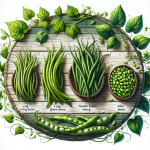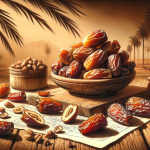Types Of White Wine
White wine is a popular choice for many wine enthusiasts due to its light and refreshing taste. It is made from white grape varieties and can be produced in many regions around the world. White wine is typically served chilled and is a great accompaniment to a variety of foods.
There are several major varietals of white wine, each with its own unique flavor profile and characteristics. Some of the most popular varietals include Chardonnay, Sauvignon Blanc, Pinot Grigio, and Riesling. Each of these varietals can be produced in different regions and can have varying levels of sweetness, acidity, and tannins.
Understanding the characteristics of white wine is important for selecting the right wine to pair with food. White wine can be dry or sweet, light or full-bodied, and acidic or low in acidity. Knowing the characteristics of different varietals can help wine enthusiasts select the perfect wine for their meal. Additionally, serving and storage tips are important for ensuring that white wine is enjoyed at its best.
Key Takeaways
- White wine is made from white grape varieties and is typically served chilled.
- There are several major varietals of white wine, each with its own unique flavor profile and characteristics.
- Understanding the characteristics of white wine is important for selecting the right wine to pair with food.
Major Varietals of White Wine

When it comes to white wine, there are several popular varietals that are enjoyed by many wine lovers. Each varietal has its own unique flavor, aroma, and character that sets it apart from the others. In this section, we will take a closer look at some of the most popular white wine varietals.
Chardonnay
Chardonnay is one of the most widely planted white wine grapes in the world. It is known for its full-bodied texture and rich, buttery flavor. Chardonnay is often aged in oak barrels, which can impart flavors of vanilla and spice. This varietal can be found in many regions around the world, including Burgundy, California, and Australia.
Sauvignon Blanc
Sauvignon Blanc is a refreshing white wine that is known for its bright acidity and citrus flavors. It is often described as having flavors of green apple, lemon, and lime. This varietal is grown in many regions around the world, including France, New Zealand, and California.
Riesling
Riesling is a versatile white wine that can range from dry to sweet. It is known for its floral aromas and flavors of peach, pear, and apricot. Riesling is grown in many regions around the world, including Germany, Australia, and the United States.
Pinot Grigio/Pinot Gris
Pinot Grigio/Pinot Gris is a light-bodied white wine that is known for its crisp acidity and flavors of citrus and tropical fruit. It is grown in many regions around the world, including Italy, France, and the United States.
Moscato
Moscato is a sweet white wine that is known for its fruity flavors of peach, apricot, and grapefruit. It is often served as a dessert wine and can be found in many regions around the world, including Italy and California.
Gewürztraminer
Gewürztraminer is a full-bodied white wine that is known for its floral aromas and flavors of lychee, rose, and spice. It is grown in many regions around the world, including France, Germany, and the United States.
Viognier
Viognier is a full-bodied white wine that is known for its aromas of apricot, peach, and honey. It is grown in many regions around the world, including France, Australia, and the United States.
In conclusion, there are many different white wine varietals to choose from, each with its own unique flavors and characteristics. Whether you prefer a crisp and refreshing Sauvignon Blanc or a rich and buttery Chardonnay, there is a white wine out there to suit your taste.
Wine Production and Regions
White wine production varies depending on the region and the winemaking techniques used. There are two main categories of white wine regions: Old World and New World.
Old World Wines
Old World wines come from European countries with a long history of winemaking. These regions have strict regulations on winemaking practices and grape varieties used.
Burgundy is a region in France known for producing some of the world’s best Chardonnay wines. The region’s unique soil and climate create wines with a distinct mineral and earthy flavor.
Loire Valley is another French region known for its white wines, particularly Sauvignon Blanc. The region’s cool climate and limestone soils produce wines with high acidity and citrus notes.
Germany and Austria are famous for their Riesling wines. The cool climate and slate soils in these regions produce wines with a crisp acidity and flavors of apricot, peach, and honey.
New World Wines
New World wines come from countries outside of Europe, such as the United States, Australia, and New Zealand. These regions have more flexibility in winemaking practices and grape varieties used.
New Zealand produces Sauvignon Blanc wines with tropical fruit notes, such as passionfruit and guava. The region’s cool climate and rocky soils contribute to the wine’s unique flavor profile.
Italy produces a variety of white wines, including Pinot Grigio and Chardonnay. The country’s diverse climate and soil types create a range of flavor profiles, from light and crisp to full-bodied and creamy.
Australia and California produce Chardonnay wines with a range of flavor profiles, from buttery and oaky to crisp and acidic. The warm climate and fertile soils in these regions contribute to the wine’s rich flavor.
South Africa produces Chenin Blanc wines with a crisp acidity and flavors of green apple and honey. The region’s warm climate and granite soils create a unique flavor profile.
Alsace in France produces white wines with a rich and full-bodied flavor profile. The region’s unique soil and climate produce wines with a high acidity and flavors of peach, apricot, and honey.
Bordeaux in France produces white wines with a blend of Sauvignon Blanc and Semillon grapes. The region’s warm climate and gravelly soils contribute to the wine’s fruity and floral flavor profile.
Spain produces white wines with a range of flavor profiles, from crisp and acidic to full-bodied and oaky. The country’s diverse climate and soil types create a variety of flavor profiles.
Chile produces Sauvignon Blanc wines with a crisp acidity and flavors of citrus and tropical fruit. The region’s cool climate and rocky soils contribute to the wine’s unique flavor profile.
White Wine Styles and Food Pairing
When it comes to pairing white wine with food, it’s important to consider the style of the wine. White wines can be dry or sweet, and each style pairs best with certain types of food. In this section, we will explore the different styles of white wine and their ideal food pairings.
Dry Whites
Dry white wines are crisp and refreshing, with a high acidity that makes them perfect for pairing with seafood, fish, salads, chicken, and pasta. They are also great with creamy pasta dishes, as the acidity helps to cut through the richness of the sauce. Some popular dry white wines include Sauvignon Blanc, Pinot Grigio, and Chardonnay.
Sauvignon Blanc is a bright and herbaceous wine that pairs well with herbs and green salads. It also goes well with raw or lightly cooked seafood, lemon-herb chicken, or asparagus quiche.
Pinot Grigio is a light and refreshing wine that pairs well with shellfish, seafood, and light pasta dishes. It’s also a great match for salads and grilled chicken.
Chardonnay is a fuller-bodied wine that pairs well with creamy pasta dishes, lobster, and other rich seafood dishes. It’s also a great match for roasted chicken and turkey.
Sweet and Dessert Wines
Sweet and dessert wines are perfect for pairing with desserts or as a dessert on their own. They are also great with spicy foods, as the sweetness helps to balance out the heat. Some popular sweet and dessert wines include Riesling, Moscato, and Port.
Riesling is a sweet and floral wine that pairs well with spicy foods, such as Thai or Indian cuisine. It’s also a great match for fruit-based desserts, such as apple pie or peach cobbler.
Moscato is a sweet and fruity wine that pairs well with chocolate desserts, such as chocolate cake or brownies. It’s also a great match for fresh fruit and cheese plates.
Port is a rich and full-bodied wine that pairs well with chocolate desserts and strong cheeses. It’s also a great match for nuts and dried fruits.
Understanding White Wine Characteristics
White wine is a popular type of wine that is produced from white grapes. It is known for its light, refreshing taste and is often enjoyed during warm weather. Understanding the characteristics of white wine can help you choose the right type of wine for your taste preferences and occasion.
Acidity and Body
Acidity is an important characteristic of white wine. It refers to the level of tartness in the wine and is often described as crisp, fresh, or bright. High acidity wines are often paired with foods that are rich or fatty, as the acidity helps to cut through the richness of the food.
Body refers to the weight and texture of the wine in the mouth. It can be described as light, medium, or full-bodied. Light-bodied wines are often described as refreshing and crisp, while full-bodied wines are described as rich and creamy.
Aromatics and Flavors
White wines are known for their fruity and floral aromatics. The aroma of a white wine can be influenced by the type of grape used, the region where it was produced, and the winemaking process.
Flavors of white wine can range from citrusy and grassy to green apple and mineral. Some white wines may have a spicy or honey flavor, while others may have a vanilla or oak barrel flavor. The sweetness level of white wine can also vary, from dry to sweet.
Understanding the characteristics of white wine can help you choose the right type of wine for your taste preferences and occasion. Whether you prefer a light-bodied, citrusy wine or a full-bodied, oaky wine, there is a white wine out there that is perfect for you.
Serving and Storage Tips
Serving and storing white wine properly can make a significant difference in the taste and quality of the wine. Here are some tips to follow:
Temperature
White wines should be served chilled but not too cold. The ideal temperature for serving white wine is between 45¬∞F (7¬∞C) to 50¬∞F (10¬∞C). Some prefer it slightly cooler at around 40¬∞F (4¬∞C). However, it’s important not to over-chill the wine as it can mask the flavors and aromas.
Storage
Proper storage is essential to maintain the quality of white wine. Unopened white wines should be stored between a temperature of 50°-55°F. Once opened, the wine should be re-corked and stored in the refrigerator to slow down the oxidation process.
Glassware
The type of glassware used to serve white wine can also affect the taste and aroma. A tulip-shaped glass with a narrow opening is ideal as it concentrates the aromas and allows for a better appreciation of the wine.
Acidity and Tannins
White wines are generally higher in acidity and lower in tannins compared to red wines. The acidity gives the wine a crisp and refreshing taste, while tannins provide structure and texture. Some white wines, such as Chardonnay, can have a higher tannin content due to oak aging.
Alcohol and Residual Sugar
White wines can range in alcohol content from 8% to 14%, with sweeter wines having a higher residual sugar content. The alcohol content affects the body and mouthfeel of the wine, while the residual sugar affects the sweetness and balance.
Wine List
When selecting a white wine, it’s important to consider the occasion and food pairing. Lighter-bodied wines, such as Sauvignon Blanc and Pinot Grigio, are ideal for appetizers and seafood dishes. Medium-bodied wines, such as Chardonnay and Viognier, pair well with poultry and creamy sauces. Full-bodied wines, such as S√©millon and Chenin Blanc, are perfect for richer dishes like foie gras and lobster.
By following these tips, you can ensure that your white wine is served and stored properly, allowing you to fully enjoy its unique flavors and aromas.
Exploring Less Common Varietals
Chenin Blanc
Chenin Blanc is a versatile grape varietal that is grown in many wine regions around the world. It is known for its high acidity and ability to produce wines that range from dry to sweet. Chenin Blanc is often used in blends, but it can also stand on its own. Some of the flavors that can be found in Chenin Blanc wines include honey, apple, and pear.
Semillon
Semillon is a white grape varietal that is often used in blends. It is known for its ability to age well and develop complex flavors over time. Semillon is often used in Bordeaux blends, but it can also be found in wines from Australia, South Africa, and California. Some of the flavors that can be found in Semillon wines include fig, honey, and lemon.
Grüner Veltliner
Grüner Veltliner is a white grape varietal that is grown primarily in Austria. It is known for its high acidity and ability to pair well with food. Grüner Veltliner wines are often described as having flavors of citrus, green apple, and white pepper.
Albariño
Albariño is a white grape varietal that is grown primarily in Spain and Portugal. It is known for its high acidity and ability to pair well with seafood. Albariño wines are often described as having flavors of peach, apricot, and lemon.
Overall, these less common varietals offer a unique and diverse range of flavors that can be enjoyed on their own or in blends. Other varietals such as Pinot Blanc, Marsanne, Verdicchio, Sancerre, Vermentino, Trebbiano, Muscat Blanc, and Torrontés can also offer unique and interesting flavors that are worth exploring.






